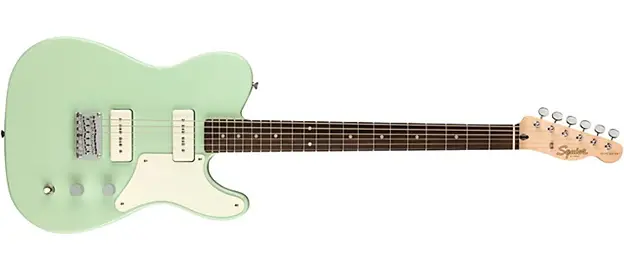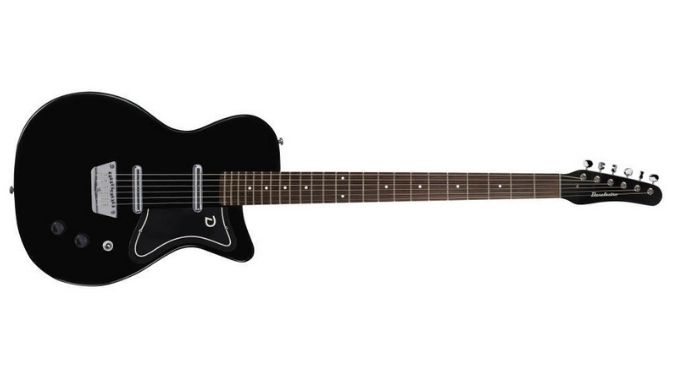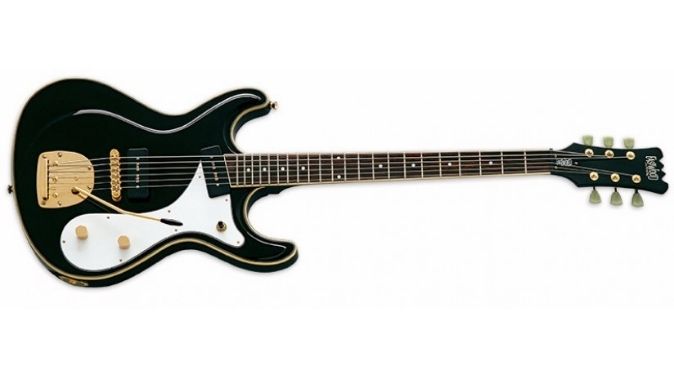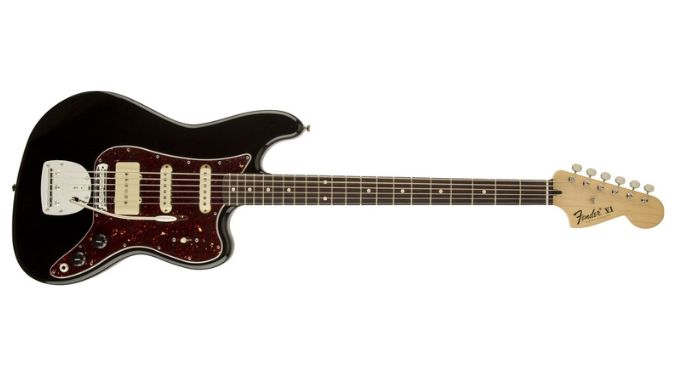If you are familiar with baritoneguitar.org, you may be aware that the Alvarez ABT60 is one of my favorite acoustic baritones. An excellent option for the budget-minded guitarist, the ABT60 (and the pickup-equipped ABT60E) should be on the list of anyone looking for a reliable, great-sounding, workhorse baritone. You can check out the full review here.
Well, the folks at Alvarez have expanded their line of baritones. Introducing the Alvarez ABT60CE! This guitar feels more like an update on the classic ABT60 than an entirely new baritone. Still, the differences are noteworthy and should only encourage you to check out the offerings from Alvarez before making your final selection for your next acoustic baritone.

Current Price:
Check the current prices of the Alzeraz ABT60CE Baritone Guitar below:
Current Price: Guitar Center
What Stayed the Same?
Most of the raw materials are the same between the ABT60 and the newer ABT60CE. And this is a good thing. Both guitars come with quality tonewoods and materials that you’d expect to find on a more expensive axe. These baritone cousins even share the same bracing structure under the hood and the same body and neck dimensions. Here is a complete list of features shared in common between the Alvarez baritones:
- Current Price: Guitar Center
- Solid A+ Sitka Spruce Top Wood
- Mahogany Back & Sides Wood
- Mahogany w/Semi-Gloss Finish Neck
- Indian Laurel/Rosewood Bridge
- Indian Laurel/Rosewood Fretboard
- Real Bone Nut & Saddle
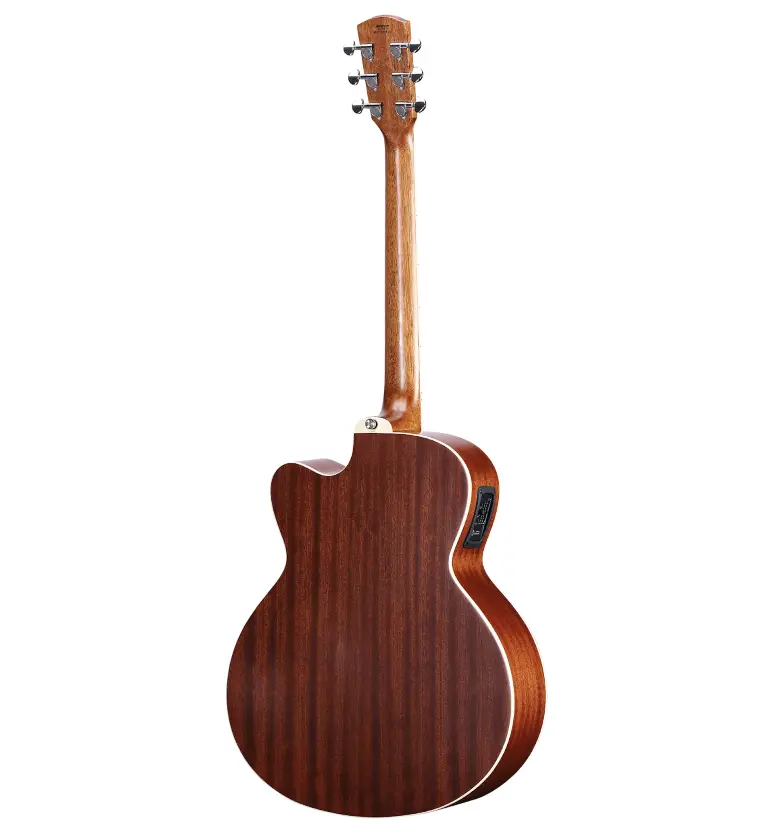
On a note of personal preference, I am glad the folks at Alvarez kept the ABT60’s simple clean aesthetic intact. You won’t find silly colors, odd angles, or other gimmicks. The ABT60 and ABT60CE feature classic and natural appointments that are sure to age well and look sharp on the stage or in your living room.
What’s New on the ABT60CE?
A Cutaway
The Alvarez ABT60CE’s most readily noticeable new feature is its cutaway. The cutaway offers unrestricted access to about the 15th or 16th fret. With a little stretching, you might be able to access the 17th or 18th fret. Of course, when dealing with a large-bodied acoustic guitar “unrestricted” means navigating a neck joint.
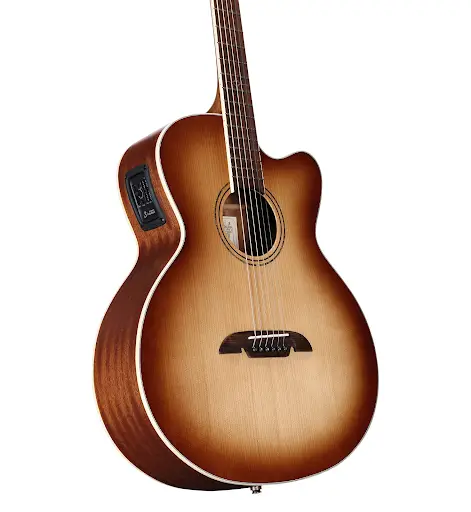
Depending on your playing style, ABT60CE’s cutaway will either be a necessary feature or a “don’t know when I will use it, but it’s nice to know it’s there” attribute. I suspect most baritone players will fall somewhere in the middle, welcoming the expanded access while using it infrequently.
LL Baggs Pickup and Stage Pro EQ
Though the cutaway is the most immediately notable difference between the ABT60 and the ABT60CE, the addition of the LL Bags Element Pickup and Stage Pro EQ is the most exciting. LL Baggs is one of the preeminent names in acoustic amplification and the Element Pickup is an excellent example of the brand’s craftsmanship.
The Element Pickup is an under-saddle transducer pickup that is placed inside the body of the guitar. The placement and design capture the movement and acoustics of the whole guitar. The result is a pickup that captures the earthy woody tone of the acoustic guitar while simultaneously reducing the dreaded “quack” of traditional piezo pickups.
The older ABT60E features an SYS550 pickup designed by B-Band. While the SYS550 is also an under-saddle transducer pickup, I believe the LL Bags setup is the superior option. Part of this is based on the superior reputation of the LL Bags brand and part of this is based on the exceptional active EQ featured with the LL Bags system.
The Stage Pro EQ system is the icing on this baritone cake. The stage pro features treble, bass, and mid-EQ. It also features volume control, a phase button, and a notch filter. A notch filter is designed to isolate a specific frequency and reduce its gain. This frequency-specific reduction in gain can be used to remove unwanted noise – like hums or feedback.

If you are having feedback problems, you slowly move the nob until you find the frequency causing the feedback. Similarly, the phase button is another noise reduction tool for use with live amplification.
The final feature of note on Alvarez ABT60CE baritone’s electronics is the tuner. That’s right, the Stage Pro EQ features a chromatic tuner! Again, this can be a lifesaver in a live performance situation for obvious reasons. It’s also super convenient when you are sitting in your own living room.
Conclusion
The older Alvarez ABT60E baritone and the sans-pickup ABT60 are slightly cheaper than the newer Alvarez ABT60CE, but all three are considered budget options and offer great value for money.
So, is the cutaway and updated electronics worth the price increase? I believe the answer is a resounding yes. For just a little bit more money you get the expanded sonic range of 4 to 6 frets and a great pickup and EQ system.
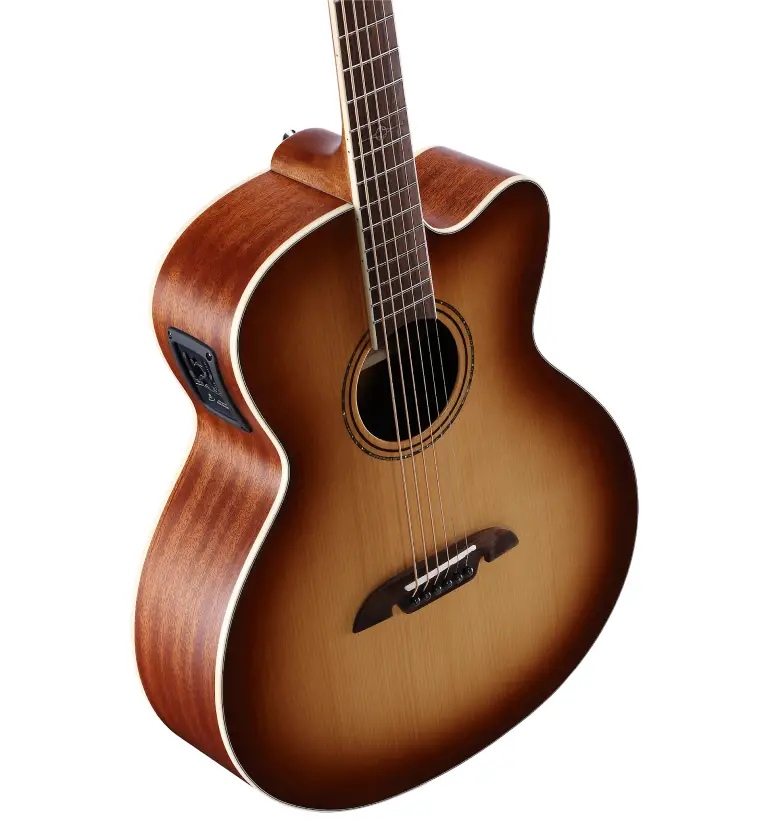
The ABT60E and ABT60CE are both amazing value. In the end, you may need to settle for whichever baritone you can find in stock or on backorder. As long as I have written baritone reviews for, the Alvarez family of baritones has consistently been in high demand and short supply. Whether you choose the ABT60E or the newer ABT60CE, the searching and waiting will be worth it once you get your hands on one of these exceptional acoustic baritone guitars.
Thanks for taking the time to read through this article. If you enjoyed this article, you might want to check out our review of the Alvarez ABT60 or our full list of acoustic baritone reviews or electric baritone reviews.

